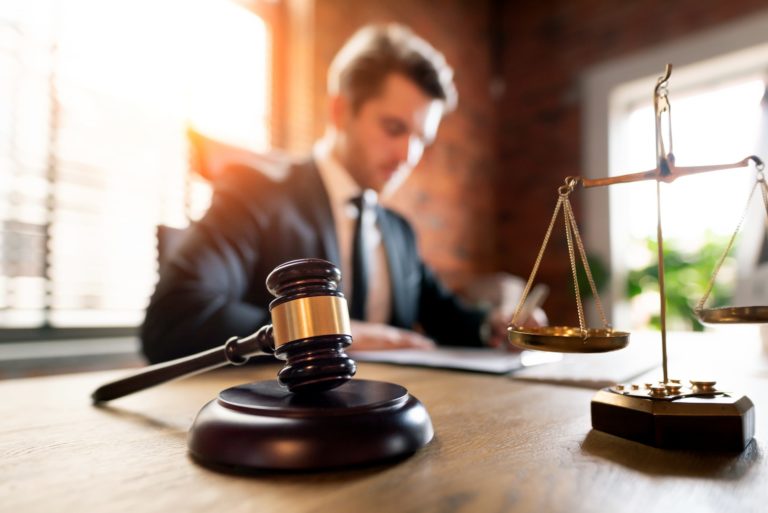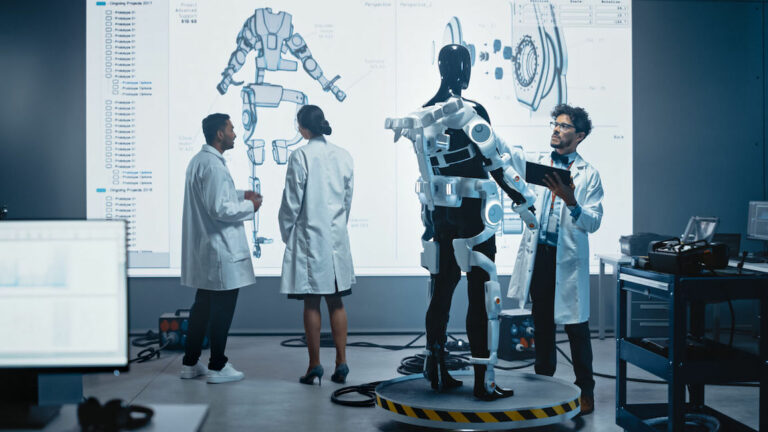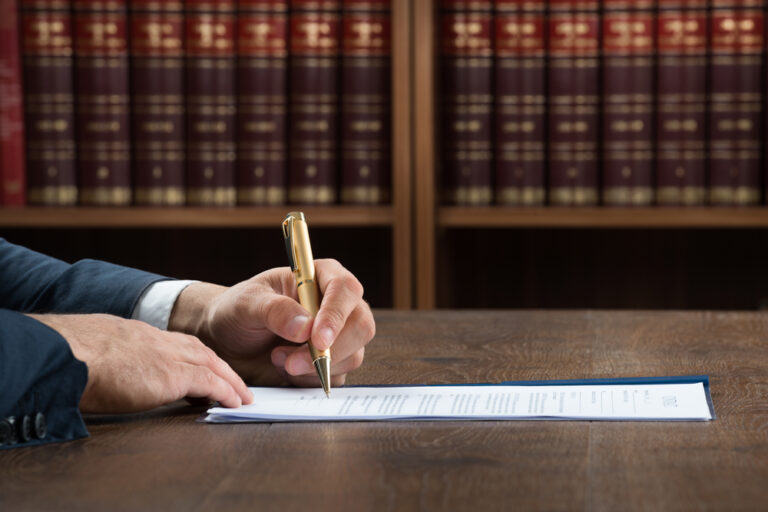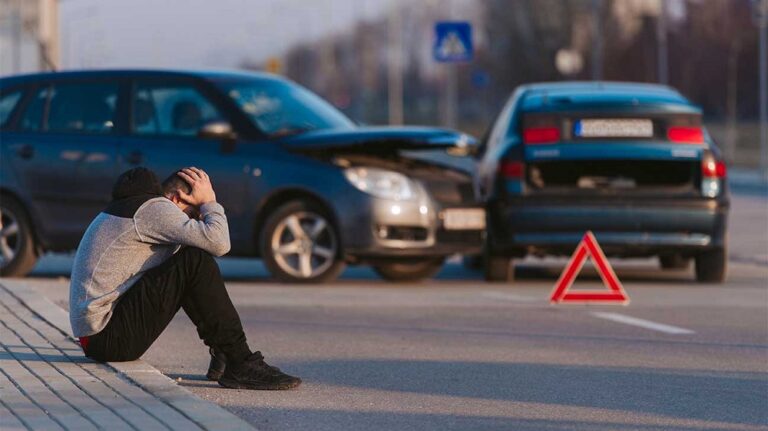Sources and Types of Air Pollutants
Air pollution is a complex mixture of various substances that can have detrimental effects on lung health. The primary sources of air pollutants include vehicle emissions, industrial discharges, and energy production. These activities release a range of pollutants into the atmosphere, including:
- Particulate matter (PM), which is composed of tiny particles that can penetrate deep into the lungs.
- Nitrogen oxides (NOx) and sulfur dioxide (SO2), which are gases that can cause respiratory inflammation.
- Carbon monoxide (CO), a colorless, odorless gas that can interfere with oxygen transport in the body.
- Volatile organic compounds (VOCs), which are chemicals that can lead to the formation of ground-level ozone, a key component of smog.
- Heavy metals such as lead and mercury, which can have toxic effects on the respiratory system.
Each type of pollutant has its own set of health implications and can affect the respiratory system in different ways. For instance, particulate matter is known to exacerbate asthma and lead to the development of chronic respiratory diseases. Understanding the diverse sources and types of air pollutants is crucial for developing effective strategies to mitigate their impact on lung health.
Short-term and Long-term Health Effects
Exposure to air pollution has immediate and lasting consequences on lung health. In the short term, individuals may experience symptoms such as coughing, throat irritation, and difficulty breathing. Asthmatics and those with chronic respiratory conditions often face acute exacerbations following exposure to polluted air.
Over the long term, the effects can be more severe and chronic. Prolonged exposure to air pollutants is linked to the development of diseases like asthma, chronic obstructive pulmonary disease (COPD), and lung cancer. Even cardiovascular health is at risk, with increased chances of heart attacks and strokes. Children, the elderly, and those with pre-existing health conditions are particularly vulnerable to these long-term effects.
Key points to consider include:
- The severity of health effects correlates with the level and duration of exposure.
- Long-term effects may not be immediately apparent, underscoring the importance of ongoing health monitoring.
- Preventative measures and policy changes are crucial to mitigate these health risks.
Vulnerable Populations and Risk Factors
Certain groups within the population are more susceptible to the adverse effects of air pollution on lung health. These vulnerable populations include children, the elderly, and individuals with pre-existing respiratory or cardiovascular conditions. Their bodies are either still developing, as in the case of children, or they have diminished physiological reserves, making them less capable of coping with environmental stressors.
Risk factors that contribute to increased susceptibility include:
- Socioeconomic status, which can influence living conditions and access to healthcare
- Genetic predisposition to respiratory conditions
- Exposure to secondhand smoke, especially in children
- Living in areas with high levels of vehicular traffic or industrial emissions
It is crucial to identify and support these at-risk groups through targeted public health interventions and policies. By doing so, communities can mitigate the impact of air pollution and safeguard the lung health of their most vulnerable members.
Strategies for Mitigation and Personal Protection
In the face of rising air pollution, individuals and communities can adopt several strategies for mitigation and personal protection to safeguard respiratory health. Personal protective measures include the use of masks, particularly those rated to filter out fine particulate matter, and the installation of air purifiers in homes and workplaces. It is also advisable to limit outdoor activities during high pollution days and to stay informed about air quality indices through local health advisories.
Communities can work together to reduce pollution sources by advocating for cleaner public transportation options and supporting policies that limit industrial emissions. Green spaces in urban areas act as natural air filters, and their expansion is a community-level mitigation strategy. Additionally, for those who have been exposed to specific pollutants like asbestos, resources are available to provide support and information on exposure and diseases. Websites dedicated to this issue offer compensation and legal help, and individuals can contact them for a free case review.
Education plays a crucial role in both mitigation and personal protection. Understanding the sources of pollution and the health risks associated with them empowers individuals to make informed decisions about their daily activities and health practices. By combining personal protective measures with community action and education, the impact of air pollution on lung health can be significantly reduced.
Allergens and Their Role in Lung Health
Common Indoor and Outdoor Allergens
Indoor and outdoor environments are rife with allergens that can compromise lung health. Indoors, dust mites, pet dander, mold spores, and cockroach debris are prevalent triggers for allergic reactions. These allergens often accumulate in bedding, carpets, and upholstered furniture, making regular cleaning a necessity for those with sensitivities.
Outdoor allergens primarily include pollen from trees, grasses, and weeds, as well as outdoor mold spores. These allergens vary with the seasons and can be particularly high during specific times of the year. For instance, tree pollen is more common in the spring, while weed pollen may be more prevalent in the fall.
Individuals can manage their exposure to these allergens by:
- Monitoring pollen and mold spore counts via local weather reports.
- Keeping windows closed during high pollen days.
- Using air purifiers with HEPA filters to reduce indoor allergen levels.
- Washing bedding and curtains regularly in hot water to kill dust mites.
- Choosing hypoallergenic options for bedding and pillows.
Understanding the common allergens in one’s environment is the first step towards managing their impact on lung health.
Mechanisms of Allergic Reactions in the Lungs
When an allergen enters the respiratory system, it can trigger a complex immune response in susceptible individuals. The body perceives these harmless substances as threats, leading to the activation of immune cells such as mast cells and basophils. These cells release histamines and other inflammatory mediators that cause the symptoms of an allergic reaction.
The process begins with the inhalation of allergens, which adhere to the mucous membranes lining the airways. This exposure prompts the production of IgE antibodies, which bind to the surface of mast cells. Upon subsequent exposure to the same allergen, it cross-links with the IgE on mast cells, causing them to degranulate and release their contents.
The release of histamines leads to a cascade of allergic symptoms, including:
- Bronchoconstriction, narrowing the airways
- Increased mucus production, obstructing airflow
- Swelling and inflammation of the airway linings
These reactions can range from mild to severe and are the basis for conditions such as allergic rhinitis and asthma. Understanding these mechanisms is crucial for developing targeted therapies to manage and alleviate allergic responses in the lungs.
Managing Allergies for Better Respiratory Outcomes
Effective management of allergies is crucial for maintaining optimal lung health and preventing the exacerbation of respiratory conditions. A multi-faceted approach is often necessary to minimize exposure to allergens and to control symptoms when they occur.
Key strategies include:
- Identifying Allergens: The first step in managing allergies is to identify the specific allergens that trigger symptoms. This can be achieved through allergy testing, which may include skin prick tests or blood tests.
- Environmental Control: Once allergens are identified, individuals can take steps to reduce exposure. This may involve using air purifiers, maintaining a clean living environment, and avoiding known allergen hotspots.
- Medication: A range of medications can help control allergy symptoms. Antihistamines, decongestants, and nasal corticosteroids are commonly used to provide relief.
- Immunotherapy: For some, immunotherapy may be an option. This treatment involves gradually increasing exposure to the allergen, with the aim of desensitizing the immune system.
- Lifestyle Adjustments: Simple lifestyle changes, such as staying indoors on high pollen days and wearing a mask during peak allergy seasons, can also make a significant difference.
By implementing these strategies, individuals can significantly reduce the impact of allergens on their respiratory health, leading to improved quality of life and reduced risk of allergy-related respiratory complications.
The Interplay Between Allergens and Asthma
The relationship between allergens and asthma is complex and significant. Allergens, which are substances that can cause an allergic reaction, often trigger asthma symptoms in sensitive individuals. Asthma, a chronic respiratory condition characterized by inflammation and narrowing of the airways, can be exacerbated by exposure to various allergens.
- Indoor allergens such as dust mites, pet dander, and mold spores are common triggers for asthma attacks within the home environment.
- Outdoor allergens, including pollen from trees, grasses, and weeds, also play a critical role in the onset of asthma symptoms, especially during high pollen seasons.
The body’s immune response to these allergens can lead to airway inflammation, increased mucus production, and bronchoconstriction, all of which contribute to the characteristic wheezing, coughing, and shortness of breath in asthma patients. Avoidance of known allergens and management of the indoor air quality are essential steps in reducing asthma exacerbations. Additionally, medical treatments such as inhaled corticosteroids and allergen immunotherapy may be recommended to control symptoms and improve lung function.
Occupational Hazards and Respiratory Risks
High-Risk Industries and Jobs
Certain industries and occupations are associated with a higher risk of respiratory problems due to the nature of their work environments. Workers in these sectors are often exposed to a variety of harmful substances that can lead to chronic lung diseases and other health issues.
- Construction workers are frequently exposed to dust, asbestos, and other particulates that can cause serious lung conditions.
- Mining exposes workers to coal dust and silica, which are known to result in black lung disease and silicosis, respectively.
- Manufacturing employees, especially those in chemical and plastics industries, may inhale toxic fumes that can damage lung tissue over time.
- Agriculture workers are at risk of inhaling pesticides and other chemicals, as well as organic dust from crops and animals, leading to conditions like farmer’s lung.
It is crucial for workers in these high-risk jobs to be aware of the potential hazards and to utilize appropriate safety measures to protect their respiratory health. Moreover, families of deceased veterans and mesothelioma patients can seek compensation through various means after the loved one’s death.
Inhalation of Toxic Substances at Work
The workplace can be a source of harmful airborne substances that pose significant risks to lung health. Employees in various industries may be exposed to a range of toxic materials, including gases, chemicals, dust, and fumes. These substances can enter the respiratory system during the course of normal work activities, leading to acute and chronic health issues.
Exposure to toxic substances at work can lead to a variety of respiratory problems, such as:
- Occupational asthma, triggered by inhaling irritants
- Chronic obstructive pulmonary disease (COPD) from long-term exposure to harmful particles
- Lung cancer associated with carcinogenic agents
- Hypersensitivity pneumonitis, an immune system response to inhaled organic dust
Preventing inhalation of toxic substances is critical for safeguarding workers’ health. Employers are responsible for implementing safety measures, which may include:
- Providing adequate ventilation systems to reduce airborne contaminants
- Ensuring the use of personal protective equipment (PPE) such as masks or respirators
- Conducting regular training sessions on workplace safety and proper handling of hazardous materials
- Monitoring air quality and enforcing exposure limits set by occupational health standards
By recognizing the potential hazards and adhering to safety protocols, the risk of respiratory damage from occupational exposure can be significantly minimized.
Protective Measures and Workplace Safety Regulations
In the realm of occupational health, stringent protective measures and workplace safety regulations are pivotal in safeguarding workers from respiratory risks. These regulations are designed to minimize the exposure to harmful substances and ensure a safe working environment.
Key protective measures include:
- The implementation of proper ventilation systems to dilute and remove airborne contaminants.
- Regular maintenance and inspection of equipment to prevent the release of toxic materials.
- Provision of personal protective equipment (PPE) such as respirators and masks, tailored to the specific hazards of the job.
- Mandatory training for employees on the correct use of PPE and safety protocols.
Workplace safety regulations are enforced by governmental agencies, which set exposure limits for various substances and mandate employers to comply with these standards. Employers are also required to conduct regular risk assessments and adopt a proactive approach to identifying and mitigating potential respiratory hazards. Failure to adhere to these regulations can result in legal consequences and jeopardize the health of workers, emphasizing the critical nature of compliance for both legal and ethical reasons.
Monitoring and Preventing Occupational Lung Diseases
Effective monitoring and prevention of occupational lung diseases are critical for safeguarding workers’ respiratory health. Regular health surveillance in high-risk industries is a cornerstone of early detection. This involves periodic lung function tests, such as spirometry, and workplace air quality assessments to identify potential hazards before they cause harm.
Key prevention strategies include:
- Implementing engineering controls to reduce exposure to harmful substances.
- Ensuring proper ventilation systems are in place to dilute airborne contaminants.
- Providing personal protective equipment (PPE) like respirators to employees when necessary.
- Educating workers about the risks and safe work practices to minimize inhalation of toxic substances.
Additionally, adherence to workplace safety regulations is non-negotiable. Employers must comply with standards set by occupational health and safety agencies to prevent occupational lung diseases. Continuous improvement of these regulations, based on the latest scientific research, helps to address emerging risks and enhance worker protection.
Climate Change and Its Effects on Lung Health
Rising Temperatures and Respiratory Illnesses
As global temperatures continue to rise, the incidence of respiratory illnesses is also experiencing an upward trend. Heatwaves and elevated temperatures can exacerbate conditions such as asthma, chronic obstructive pulmonary disease (COPD), and other respiratory infections. The heat not only worsens air quality by increasing ground-level ozone formation but also contributes to the proliferation of allergens like pollen, which can trigger allergic reactions and asthma attacks.
The following points highlight the relationship between rising temperatures and respiratory health:
- Heat-induced Stress: High temperatures can cause the body to overheat, leading to heat stress and strain on the respiratory system.
- Air Quality Deterioration: Warmer weather can enhance the chemical reactions that produce air pollutants, reducing air quality and increasing the risk of respiratory problems.
- Allergen Increase: Heat can extend the growing seasons of plants, resulting in longer periods of high pollen counts that can aggravate respiratory allergies.
Individuals with pre-existing respiratory conditions, the elderly, and children are particularly vulnerable to these temperature-related health challenges. Public health initiatives and awareness campaigns are crucial in educating the population about the risks and the importance of taking preventative measures during periods of extreme heat.
Air Quality and the Prevalence of Respiratory Diseases
The correlation between air quality and respiratory diseases is well-established in scientific literature. Poor air quality, characterized by high levels of pollutants such as particulate matter, nitrogen dioxide, and sulfur dioxide, has been linked to an increased incidence of chronic respiratory conditions, including asthma, bronchitis, and chronic obstructive pulmonary disease (COPD).
Key factors influencing the prevalence of respiratory diseases include:
- Urban vs. rural settings: Urban areas often have higher pollution levels due to traffic congestion and industrial emissions.
- Seasonal variations: Certain times of the year, such as winter, can exacerbate pollution levels and respiratory illnesses due to factors like temperature inversions.
- Socioeconomic status: Communities with lower socioeconomic status may face higher exposure to poor air quality and have less access to healthcare resources.
Efforts to improve air quality are critical in reducing the burden of respiratory diseases. These efforts can range from policy changes, such as stricter emissions standards, to individual actions, such as reducing vehicle use. Public health initiatives also play a vital role in educating communities about the risks associated with poor air quality and ways to minimize exposure.
Impact of Extreme Weather Events on Lung Health
Extreme weather events, such as wildfires, hurricanes, and heatwaves, have profound effects on lung health. Wildfires, for instance, produce smoke laden with particulate matter that can penetrate deep into the lungs, exacerbating conditions like asthma and chronic obstructive pulmonary disease (COPD). During hurricanes, the spread of mold and other airborne pathogens can lead to respiratory infections and allergic reactions.
Heatwaves contribute to the formation of ground-level ozone, a potent respiratory irritant. This can lead to an increase in hospital admissions for respiratory issues, particularly among the elderly and children. The following list outlines the key impacts of extreme weather on respiratory health:
- Increased particulate matter from wildfires leading to respiratory distress.
- Spread of mold and allergens post-hurricane causing allergic reactions and infections.
- Elevated ground-level ozone during heatwaves exacerbating lung diseases.
Communities and health systems must prepare for these events by developing emergency response plans and increasing public awareness about the risks to respiratory health. Individuals with pre-existing respiratory conditions should be particularly vigilant and may need to take additional precautions during such events.
Adaptation and Resilience Strategies for Respiratory Health
As the impacts of climate change intensify, it becomes increasingly important to develop adaptation and resilience strategies to protect lung health. Individuals and communities can take proactive steps to minimize the respiratory risks associated with changing environmental conditions.
Key strategies include:
- Enhancing indoor air quality through the use of air purifiers and maintaining proper ventilation systems.
- Promoting the growth of green spaces in urban areas to improve air quality and provide natural cooling effects.
- Encouraging the use of protective masks during high pollution days or when exposed to smoke from wildfires.
- Strengthening public health systems to provide timely information and resources for managing respiratory conditions exacerbated by climate change.
Healthcare providers also play a crucial role in adapting to the changing climate. They must stay informed about the latest research on climate-related respiratory risks and educate patients on how to protect themselves. Moreover, policymakers must prioritize the development of infrastructure and legislation that supports clean air initiatives and reduces greenhouse gas emissions. Together, these efforts can help build a more resilient society in the face of climate change and safeguard respiratory health for generations to come.
The Role of Urbanization in Respiratory Health Challenges
Urban Air Quality and Its Health Implications
Urban environments are often characterized by higher levels of air pollution due to a concentration of vehicles, industrial activities, and energy production. The quality of air in these areas can have significant health implications for residents, particularly affecting the respiratory system.
- Traffic emissions: A primary source of urban air pollution, these release nitrogen oxides, particulate matter, and other harmful substances into the atmosphere.
- Industrial pollution: Factories and power plants contribute to the levels of sulfur dioxide and volatile organic compounds in the air.
- Construction dust: Urban development projects can raise dust levels, which contain a mix of particulate matter that can be inhaled deeply into the lungs.
The cumulative effect of these pollutants can exacerbate respiratory conditions such as asthma, bronchitis, and chronic obstructive pulmonary disease (COPD). Children, the elderly, and those with pre-existing health conditions are particularly vulnerable to the adverse effects of poor air quality. To mitigate these risks, it is essential to monitor air quality indices, support policies that reduce emissions, and encourage the use of public transportation and green spaces.
Infrastructure Development and Its Impact on Lung Health
The rapid pace of urban infrastructure development can have significant repercussions on lung health. Construction activities release a variety of particulate matter and chemicals into the air, which can exacerbate respiratory conditions.
- Dust and Particulate Matter: Construction sites are a primary source of airborne dust and fine particles that can penetrate deep into the lungs, causing irritation and long-term damage.
- Chemical Pollutants: The use of volatile organic compounds (VOCs) in building materials and paints contributes to indoor air pollution, which can be harmful when inhaled over time.
- Heavy Machinery Emissions: Diesel engines used in construction equipment emit nitrogen oxides and particulates, contributing to outdoor air pollution levels.
Efforts to mitigate these impacts include the use of low-emission construction equipment, dust suppression techniques, and the selection of building materials with lower levels of VOCs. Additionally, green infrastructure and building designs that promote natural ventilation can help reduce the concentration of indoor pollutants, thereby safeguarding lung health.
Population Density and the Spread of Respiratory Infections
High population density in urban areas can significantly contribute to the spread of respiratory infections. Crowded living conditions and public spaces facilitate the transmission of airborne pathogens, as individuals are more likely to come into close contact with one another. This proximity increases the risk of exposure to infectious agents, such as viruses and bacteria, that affect lung health.
Key factors influencing the spread of respiratory infections in densely populated areas include:
- Public transportation systems that serve as hubs for pathogen transmission.
- Inadequate ventilation in residential and commercial buildings.
- Limited access to healthcare facilities, which can delay diagnosis and treatment.
To mitigate the risks associated with high population density, urban planners and public health officials must collaborate to implement strategies such as:
- Enhancing ventilation systems in buildings.
- Expanding access to healthcare services.
- Promoting public awareness about respiratory hygiene practices.
By addressing these challenges, cities can create environments that are less conducive to the spread of respiratory infections, thereby protecting the lung health of their inhabitants.
Urban Planning and Healthy Respiratory Environments
The design and structure of urban environments play a crucial role in the respiratory health of its inhabitants. Thoughtful urban planning can mitigate the adverse effects of pollution and contribute to the creation of healthy respiratory environments. Key strategies include:
- Green Spaces: Incorporating parks and green belts to improve air quality and provide residents with areas for physical activity.
- Public Transportation: Developing efficient public transit systems to reduce vehicle emissions and traffic congestion.
- Building Regulations: Enforcing building codes that promote ventilation and use of non-toxic materials to ensure indoor air quality.
Moreover, urban planners are increasingly recognizing the importance of walkable neighborhoods. By reducing reliance on cars, cities can decrease air pollution levels and encourage a healthier, more active lifestyle among residents. Additionally, integrating environmental considerations into zoning laws can help to protect residential areas from being situated near industrial zones known for emitting pollutants.
Collaboration between government entities, urban planners, environmental experts, and the community is essential to develop and implement policies that prioritize lung health. Through such partnerships, cities can become models of healthy living, demonstrating that urbanization and respiratory well-being can coexist harmoniously.











